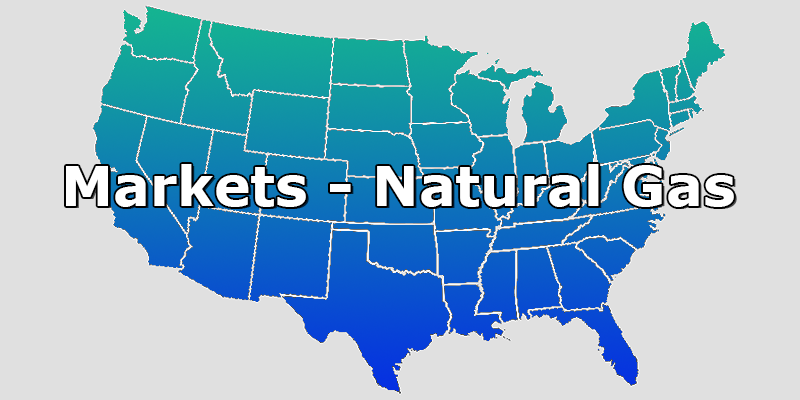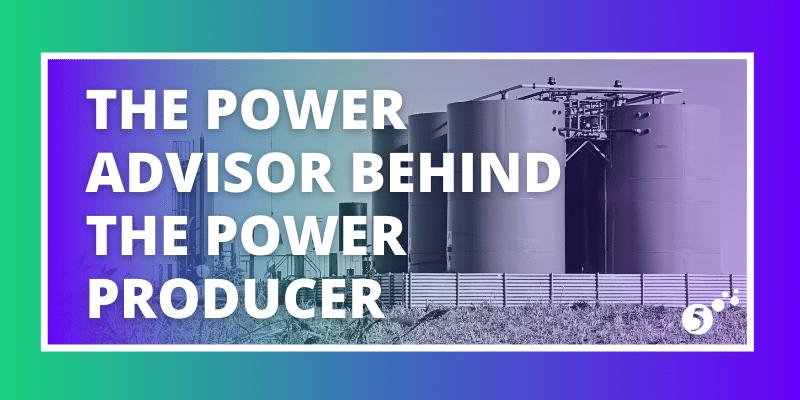To say that commodity markets have been volatile during the last 12 months is an understatement, especially for natural gas. This volatility had many drivers including one of the most active hurricane seasons in over a decade, big drops in LNG demand over the summer followed by a rebound in the fall, one of the warmest Novembers on record, and the frigid temperatures at the beginning of the new year. These factors all contributed to significant price swings in spot natural gas prices.
10 min read
April 2021 - Quarterly Market Letter
By Jon Moore on April 21, 2021
On behalf of the team at 5, I am pleased to forward our market letter for the first quarter of 2021. This letter focuses on the latest Black Swan event, Uri, the winter storm that hit Texas in mid-February. The storm caused a catastrophic loss of generation and triggered an extended period of extremely high energy prices. This letter provides: (i) a summary and chronology of the legal and regulatory proceedings that Uri has spawned; (ii) a snapshot of how the storm has impacted a variety of market participants including municipal utilities, wind farms, renewable purchasers, commercial and industrial buyers, and the natural gas market; and (iii) an overview of legislative efforts to address electric reliability in ERCOT.
Topics: Markets Natural Gas ERCOT Newsletters Education Resiliency
3 min read
A Return to Normalcy (Sort of)
By 5 on March 30, 2021
Throughout last month’s Winter Storm Uri, NYMEX Henry Hub natural gas prices increased in volatility. Multi-year highs for the prompt month contract (April) along with daily trading ranges almost as high as earlier this winter were experienced. By late February, the winter storm bulls had left the market, and the bears took over. By the middle of March, April’s contract had sold off from the closing price of $3.032/Dth on February 17th to a closing price of $2.483/Dth on March 15th.
Topics: Markets Natural Gas
3 min read
The Gas Price Rally That Never Happened...
By 5 on February 26, 2021
Valentine’s Day may warm our hearts, but it often coincides with some of the coldest weather of the winter, and this year was no exception. Last week, Valentine’s Day weekend was followed by Presidents Day, which means that gas traders must make their purchases for the long weekend on Friday to cover the next four days. The weather forecast on that Friday pointed to record cold temperatures across most of the midcontinent and extending into south Texas. The expectation of cold temperatures and high heating demand over the long holiday weekend started to produce volatility in natural gas markets as early as Friday afternoon.
Topics: Markets Natural Gas
4 min read
Rising Temps, Falling Prices
By 5 on January 27, 2021
The price for this winter’s natural gas has seen its fair share of volatility over the past 12 months. Coming out of last winter’s abnormally warm weather, prices for the 2021 calendar year strip saw its all-time low of $2.27 per MMBtu on Friday, March 6, 2020. This was the last trading session before the Saudi Arabia and Russia feud over cutting crude supplies at the beginning of the coronavirus pandemic. Since last March, natural gas prices saw two sustained bull markets where prices rallied more than 50¢, from April through May, and then again from late July through the end of October. These two rallies are highlighted in Figure 1.
Topics: Markets Natural Gas
1 min read
Spotlight - The Power Advisor Behind the Power Producer
By 5 on January 14, 2021
It takes a lot of energy to produce energy. Natural gas and oil producers use significant amounts of both natural gas and electricity to extract, process, and transport the raw materials that are ultimately refined into various sources of energy and fuels. In 2012, an oil and gas producer in Texas turned to 5 for assistance in managing their electricity supply. This company required a robust and dynamic way of managing its electricity expenses given that its own revenues are closely correlated to volatile oil and gas prices.
Topics: Natural Gas Clients Case Studies Procurement Resiliency
2 min read
It's Official, LNG is Back, Baby!
By 5 on December 22, 2020
Global LNG (Liquified Natural Gas) prices, similar to global crude prices, have struggled this year. The price of West Texas Intermediate Crude (crude oil’s benchmark index) bottomed out at -$37 per barrel on April 20th, rebounded by June to approximately $30, and then recovered to about $40 per barrel for most of the summer. While LNG’s Japan Korea Marker (JKM, a major LNG index) significantly decreased, it did not go into negative territory like crude oil. However, unlike crude oil, the JKM index had a much longer sustained low, and when including the cost to liquify the natural gas, the price for LNG was essentially negative.
Topics: Markets Natural Gas
3 min read
Gas Prices Have Plummeted (This is a Big Deal)
By 5 on November 24, 2020
Throughout the year, analysts wrestled with many variables as they tried to forecast the End of Season (EOS) natural gas storage levels, which were reported by the U.S. Energy Information Administration (EIA) in the first week of November. The amount of gas in storage was impacted by the following:
Topics: Markets Natural Gas
3 min read
Fundamental & Technical Analysis for 2021
By 5 on October 29, 2020
The rise in the futures price for the 2021 NYMEX Henry Hub natural gas contract has been driven by one major fundamental driver - the steady decline in natural gas production over the last 10 months. Figure 1 shows that in November 2019 the EIA reported a record high average daily production of dry natural gas of 96.2 billion cubic feet (Bcf) per day. In September 2020 the daily average production fell to only 87.1 Bcf/day, a decrease of 9.4%. Even with a decline in gas production, the mild winter last year and the demand destruction from coronavirus has created a situation where there will likely be record levels of natural gas in storage.
Topics: Markets Natural Gas
4 min read
How Today’s Hurricanes Impact Natural Gas Prices
By 5 on September 24, 2020
Once upon a time, major hurricanes in the Gulf of Mexico had the potential to wreak havoc on natural gas markets and send prices soaring to levels that are 4X what they are today. Late last month, as Hurricane Laura was heading toward major gas production centers, many were asking if gas prices would turn bullish and increase because of the impact to natural gas supplies. If this were 2005, the answer would have been a definitive “yes.” But today, the correlation of natural gas prices and hurricanes in the Gulf of Mexico is not what it was fifteen or even ten years ago. There are several reasons for this change.




